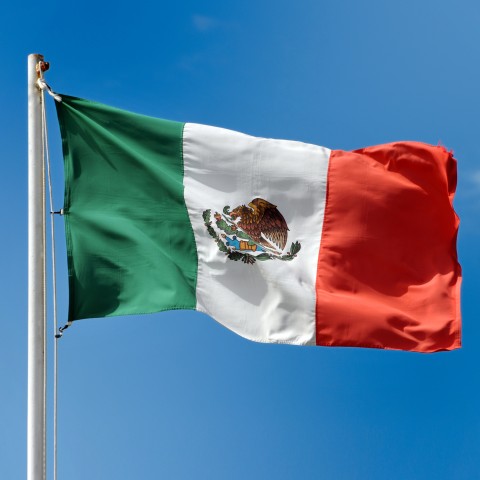
Every country has a story behind its independence, and many have a figure whom they credit with their victory. In fact, Mexican Independence Day is really more about the country’s national hero, Miguel Hidalgo y Costilla, than its actual independence!
In this article, you’ll learn more Mexican Independence Day facts, delve into the country’s history, and explore the most popular traditions.
Let’s get started.

1. What is Mexican Independence Day?

Each year on September 16, Mexicans celebrate their country’s Día de la Independencia (“Independence Day”). The most important holiday in the country, Mexican Independence Day marks the date in 1810 when Mexico took its first major step toward gaining independence from the Spanish.
Let’s dig a little deeper.
Mexican Independence Day History

In the year 1519, Hernán Cortés and those under his command began their invasion of the Aztec Empire (which comprised parts of today’s Mexico). 300 years of Spanish rule followed, and the land’s indígena (“indigenous”) inhabitants fared poorly. The Spanish took land and possessions away from the natives, and refused them the ability to participate in governmental politics. For years, conspiracies against the Spanish had risen up left and right; each one was found out and put to a quick end.
In 1808, inspired by the recently won freedom of the United States and empowered by the imprisonment of Ferdinand VII, the natives decided it was time for a change. In particular, a priest named Miguel Hidalgo y Costilla—today considered a national héroe (“hero”)—was adamant in his desire for a free and independent Mexico.
Costilla, along with his second-in-command Ignacio Allende, grew a huge movement through Mexico. He’s credited with filling the oppressed Criollo (“Creole”) population with inspiration and boldness, building up an army much larger than anything the Spanish rulers thought possible. In 1810, Costilla gathered his untrained, unorganized army, and delivered a speech that has been coined The Cry of Dolores (named for the city in which the gathering took place).
To everyone’s surprise, Costilla retreated before commencing the actual attack.
Despite this unexpected turn—the root of which historians still debate today—he’s considered the Father of Mexican Independence. Had it not been for his role in inspiring the Creoles to rise up against their oppressors, Mexico may not have gained independence in 1821.
2. Mexican Independence Day Traditions

Mexican Independence Day celebrations are loud, crowded, and colorful. The streets are bright with the colors of the Mexican Flag (red, white, and green), flowers decorate buildings and homes, and at night, the skies are filled with fireworks.
Many cities host a Mexican Independence Day parade, in addition to parties and other get-togethers. Perhaps the most popular tradition is that of listening to their local government officials as they reenact the Cry of Dolores. In Zócalo, people gather to watch as the President rings Costilla’s bell and gives the Cry of Dolores speech.
Countries that have a large number of native Mexicans may also put on Mexican Independence Day festivals. For example, Los Angeles in the U.S. is known for its elaborate festivities for the holiday, complete with traditional dances and other performances by native Mexicans.
- → Learn about how people in Spanish-speaking countries celebrate their biggest festivals on SpanishPod101.com!
3. Mexican Independence Day Food

Now for the best part: the food!
Like many other things across the country, dishes served on this day often reflect the colors of the Mexican Flag. Imagine a dish, for example, with green cilantro, black beans, and red pico de gallo. A very popular dish for this holiday is called chiles en nogada, which consists of Poblano chiles, meats, dried fruits, and a white, nutty sauce. You can read more about traditional Mexican dishes on TripSavvy.com!
Of course, you can also find more non-traditional methods, such as dying cookies or making a cake with these colors in the frosting. (Hungry, yet?)
- → Here’s a vocabulary list of the Most Popular Mexican Foods and another about Cooking!
4. Essential Vocabulary for Mexican Independence Day

Let’s review some of the vocabulary from this article!
- Septiembre – “September”
- España – “Spain”
- Personas – “People”
- Esclavitud – “Slavery”
- Independencia – “Independence”
- Héroe – “Hero”
- Día de la Independencia – “Independence Day”
- Guerra – “War”
- Esclavo – “Slave”
- Criollo – “Creole”
- Indígena – “Indigenous”
Remember to visit our Mexican Independence Day vocabulary list to hear the pronunciation of each word.
Final Thoughts
300 years is a long time for a people to be oppressed, but the determination of a passionate leader stirred courage in their hearts.
Does your country have a similar independence story? And which of these Mexican Independence Day events seems most fun to you? Let us know in the comments!
For more information on Mexican culture and the Spanish language, explore SpanishPod101.com! If you’re not sure where to start, we recommend the following blog posts:
- Día del Trabajo: Celebrating Labor Day in Mexico
- Día de la Bandera: Celebrating Mexican Flag Day
- SpanishPod101’s Guide to Etiquette in Spanish-Speaking Countries
- Dia de la Candelaria: How to Celebrate Candlemas in Mexico
- Top 15 Mexican TV Shows to Boost Your Spanish
We hope to see you around. 😉
Happy Mexican Independence Day from the SpanishPod101 team!










